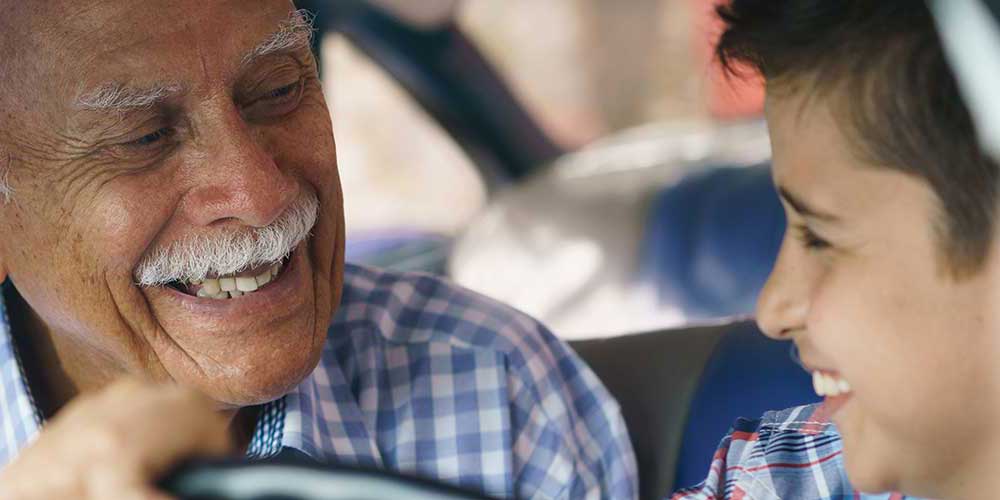By Robert Tate, Automotive Historian and Researcher
Images Courtesy of the Studebaker National Museum/Studebaker Archives
Published 1.27.2021
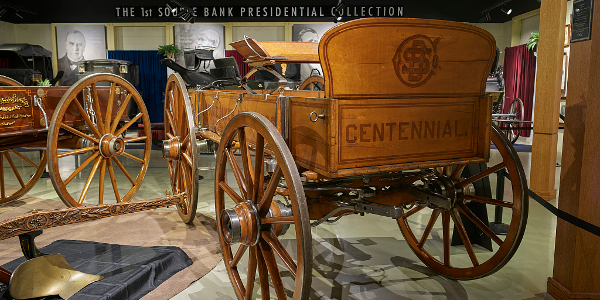 An 1852 Studebaker Brothers wagon
An 1852 Studebaker Brothers wagon
When you look at Studebaker’s automotive history, you have to go back to the late 1800s. The company was founded in 1852, when the Studebaker brothers built their first two wagons for business owners and for traveling throughout the country. The initial Studebakers were covered wagons that helped build the American West. By 1860, Studebaker was producing thousands of covered wagons that most early settlers in America thoroughly enjoyed for traveling.
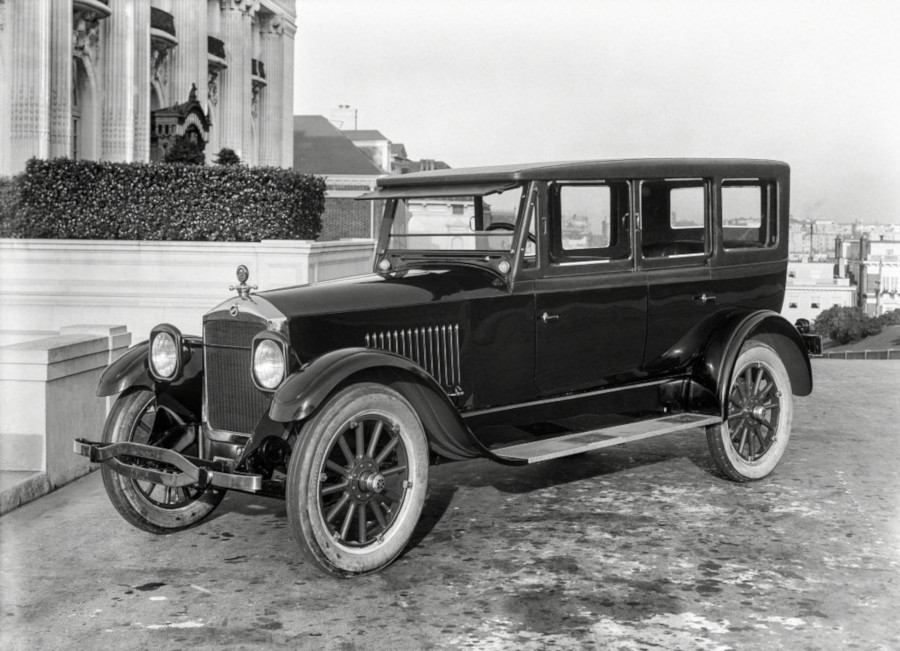 The 1920 Studebaker Big Six
The 1920 Studebaker Big Six
The Studebaker Brothers Manufacturing Company called themselves “The World on Wheels” and made their first electric automobile in 1902, followed their first gas-powered model two years later. By the 1920s, Studebaker was truly a top automotive brand. For example, the popular 1920 Studebaker Big Six model was a great looking automobile with a refined design.
The 1930s and the Great Depression proved to be a difficult time for Studebaker, and the company had to declare bankruptcy in March 1933. Fortunately, the company was able to reorganize and continue to manufacture great looking automobiles.
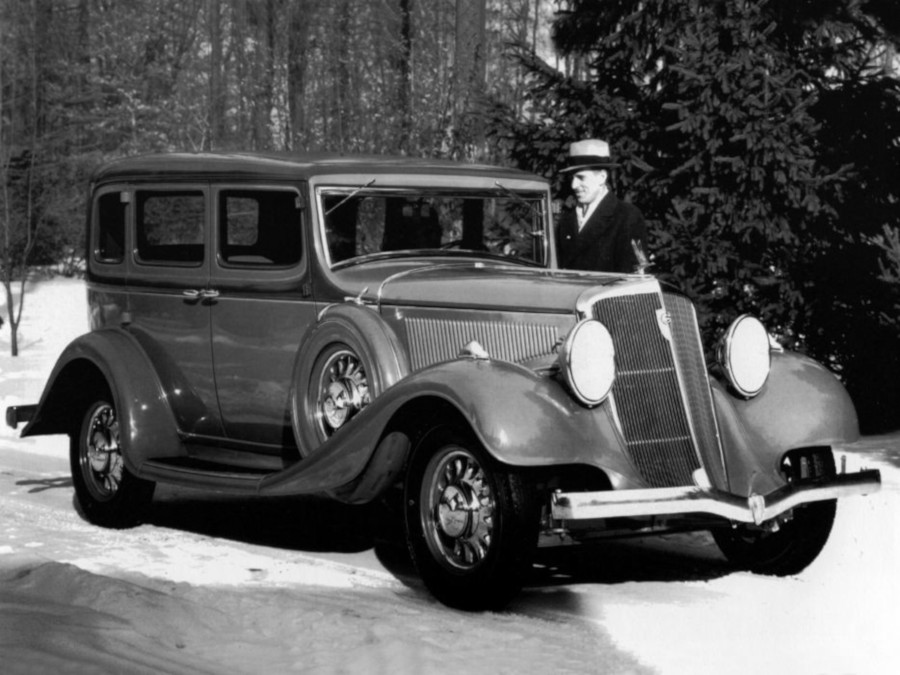 1933 Studebaker Commander Regal Sedan
1933 Studebaker Commander Regal Sedan
Many new innovations were added to Studebaker models in the 1930s, including free-wheeling brakes, improved steering gear, and a silent gear transmission. On November 3, 1931, a President Model 80 set numerous stock car speed records at Muroc dry lake in California. The 1933 Studebaker Commander Regal sedan was a great looking vehicle that produced many orders.
Before World War II, Studebaker manufactured the Champion, Commander and President models for the 1941 and 1942 model years. The last Studebaker automobile to come off the line was a 1942 President Skyway model on January 31, 1942. During the war, Studebaker manufactured army and cargo trucks, along with 63,789 Wright Cyclone nine-cylinder radial engines for the legendary B-17 Flying Fortress. At the conclusion of the war, Studebaker received the Army-Navy “E” Excellence award for its production efforts.
In July 1945, Studebaker began to transition away from wartime production to designing and manufacturing planning for its post war vehicles. The company’s first post war production car was the Skyway Champion models. In 1947, Studebaker introduced a newly designed model under the direction of styling chief Raymond Loewy with chief engineers Bill Bourke and Eugene Hardig. These new Studebaker models offered a new light and low look which most consumers really admired and enjoyed.
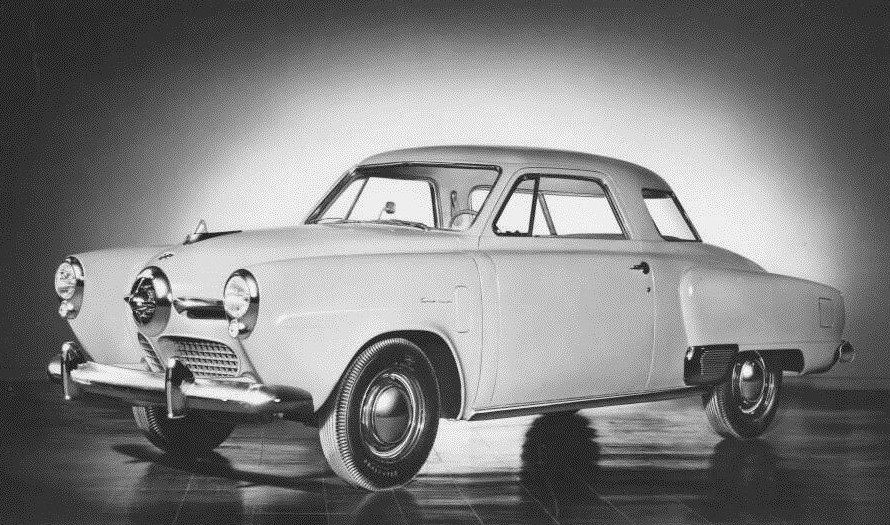 1950 Studebaker Coupe
1950 Studebaker Coupe
The 1950-51 Studebaker models offered the famous bullet nose design, which created much conversation in the automotive world. In 1951, Motor Trend magazine called the 1951 Studebaker models “a terrific surprise." These 1951 Studebaker models also offered a popular V8 engine.
In 1953, Studebaker offered a new design look. Some automotive historians call their 1953 models the best automotive designs of the 1950s. They were designed under the direction of Loewy’s studio by Bob Bourke, who was chief designer along with Bob Koto. Koto-designed ideas for the 1953 Studebakers included such features as a dropped beltline, substantial C-pillars, broad glass area and a low ground-hugging front end.
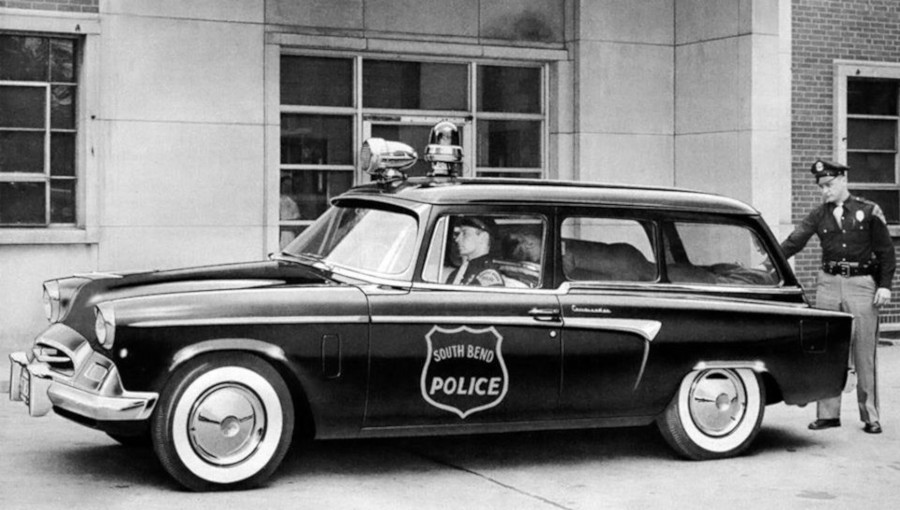 A 1956 Studebaker South Bend IN police wagon
A 1956 Studebaker South Bend IN police wagon
In 1954, the South Bend, Indiana-based Studebaker was bought by the Packard Motor Car Company of Detroit, and the resulting company became known as Studebaker-Packard.
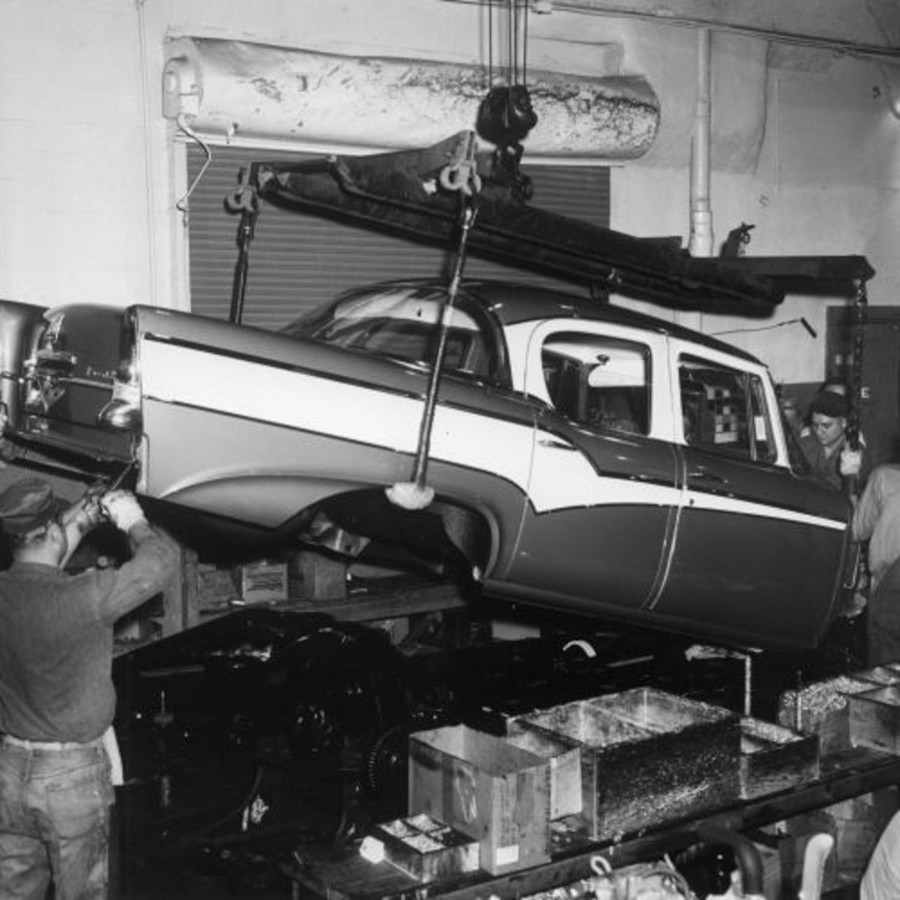 The assembly line for the 1956 Studebaker models
The assembly line for the 1956 Studebaker models
For 1956, Studebaker offered more great looking models. Most consumers really liked the styling, although they weren’t significantly different from recent Studebaker models. 1956 Studebakers like the Pinehurst, President and Commander models represented a compact look and were great for economical driving.
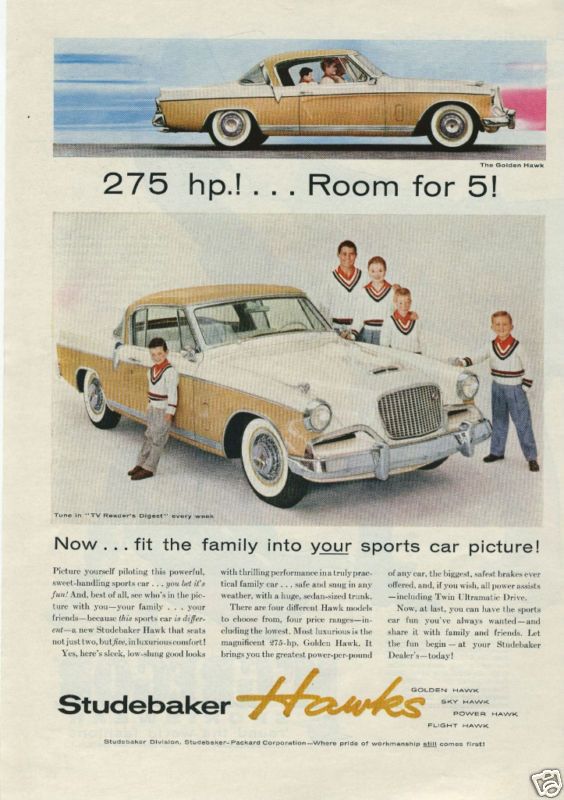 A 1956 Studebaker magazine ad
A 1956 Studebaker magazine ad
In 1959, Studebaker introduced the Lark series. The Lark Deluxe two-door sedan was offered only as a six-cylinder. Full wheel covers and whitewall tires were optional.
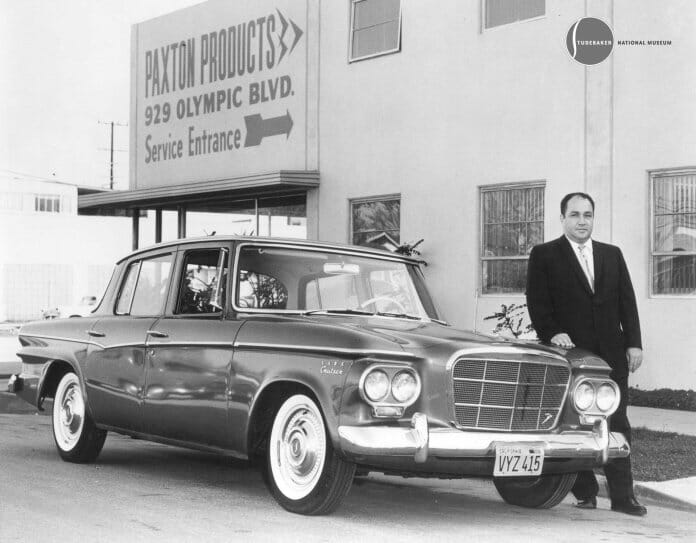 A 1962 Studebaker sedan with Andy Granatelli (Studebaker National Museum)
A 1962 Studebaker sedan with Andy Granatelli (Studebaker National Museum)
In 1962, Studebaker-Packard reverted back to the Studebaker Corporation, and their models of that year offered big car styling, along with a new hood ornament and new bench seats. However, the biggest news for Studebaker was the announcement of the Lark Daytona convertible Official Pace Car (not pictured) for the Indianapolis 500 in May of 1962. Also, actor Alan Young of the popular TV series “Mister Ed” was the company’s advertising spokesperson in 1962.
Unfortunately, the company continued to experience declining sales, and the last Studbaker model rolled off the line in Hamilton, Ontario in March 1966.
In conclusion, Studebaker has a long history that auto enthusiasts and historians will remember for years to come.
Bibliography
Langworth, Richard M. “Studebaker: the Postwar Years.” Motor Books International, 1971.
Reynolds, Ed. “Studebaker Lark 1959-1966 Photo Archive.” Iconografix Photo Archive Series, 2003.
Langworth Richard M., & Hall, Asa E. “The Studebaker Century: A National Heritage.” 1983.
Flint, Jerry. “The Dream Machine the Golden Age of American Automobiles, 1946-1965." The New York Times Book Co., 1976.


